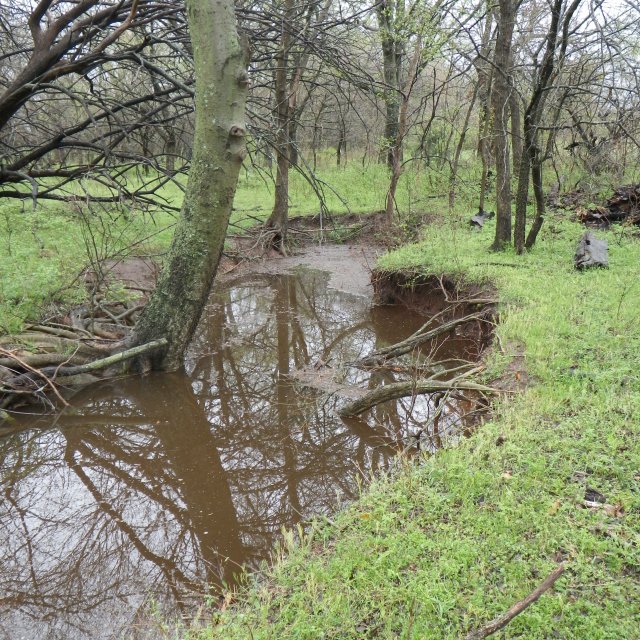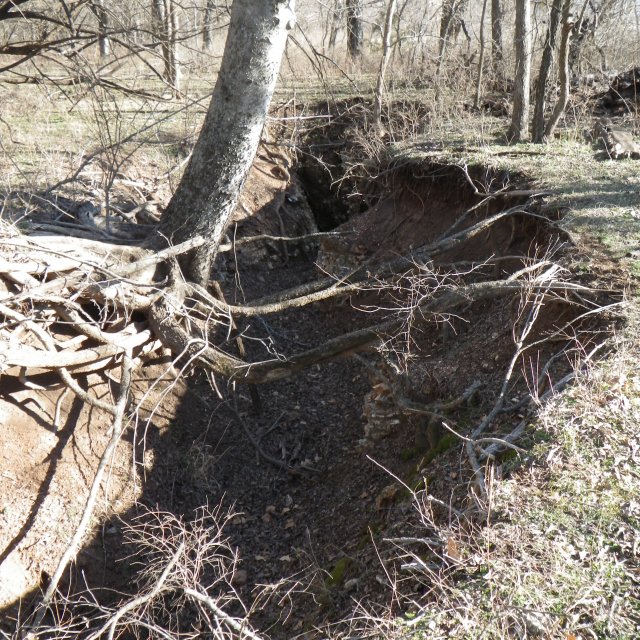Protecting Groundwater Resources within the Arbuckle-Simpson Aquifer in Oklahoma
Published September 7, 2021


In south central Oklahoma, where water and rainfall can be scarce, the Arbuckle-Simpson Aquifer is a critical water source. The aquifer – a store of groundwater within the underground rock layers – has always provided water to residents of the area. Today, the aquifer remains the primary source of drinking water for tens of thousands of people, including the Chickasaw Nation. Additionally, the aquifer provides water for modern agriculture, mining, and other industries; is the source of many springs, lakes, and rivers; and provides recreational and tourism areas. The aquifer is designated as a “sole-source aquifer,” a recognition that there are no reasonably available alternative drinking water sources should the aquifer become contaminated.
With so much at stake, the aquifer is a vital and irreplaceable source of water for the area. To best protect and manage this valuable resource, there must be a full understanding of what needs protected. The challenge of studying groundwater, however, is that it’s not readily observable, like a stream or lake.
For decades, EPA scientists in Ada, Oklahoma, have been working with federal, tribal, state, and academic partners, including the City of Ada and the Chickasaw Nation, whose headquarters are in Ada, to understand the impacts of human activities (like pumping water from the aquifer) on the aquifer’s water quality and quantity. EPA and its partners are also conducting research to understand the aquifer’s geological controls on groundwater flow, or its underground “plumbing system.”
Scientists have developed conceptual site models of how rainfall percolates through the ground to recharge the groundwater supply. To ground truth these conceptual models, they have installed monitoring wells, groundwater, and surface water autosamplers, and weirs in a field study site within the aquifer to measure changes in water levels and water.
The area is experiencing a wet summer this year, which is a good thing, as the Arbuckle-Simpson Aquifer relies solely on precipitation to recharge the groundwater supply. This feature makes it a unique aquifer case. No water from outside the basin enters the aquifer unless it’s via rainfall.
“The aquifer is a leaky bathtub,” explains EPA hydrologist Dr. Randall Ross. “If it doesn’t receive rain, its groundwater supply doesn’t get replenished.” Drier years lead to lower water levels, so this year’s weather is providing an ideal situation for EPA to study where and how rainfall enters the ground, how it travels through the aquifer, and what impacts it may have along the way.
Other EPA research includes electrical resistivity imaging to map the subsurface in order to “see” the apparent water movement through the subsurface features, and enhanced aquifer recharge studies, which use the aquifer to store excess rainfall from wet years. Enhanced aquifer recharge uses small dams and weirs to capture water from significant rainfall events, allowing it to infiltrate into the ground, rather than run off the surface.
“Enhanced aquifer recharge represents a process, once scientifically proven, that will provide a practical solution to rising demand for additional water resources, and potentially a definitive resource management approach to aquifer sustainability,” says Kris Patton, Director of the Chickasaw Nation’s Natural Resources Office.
While these field studies are occurring in just one small area – several square miles within an aquifer that underlies over 500 square miles – these intensive studies are providing important data and improving our understanding of the Arbuckle-Simpson Aquifer system.
“This is not rocket science but applied research that area stakeholders are very interested in,” says Dr. Ross. “The aquifer is a complicated system we still don’t entirely understand.”
Issues of water quantity will continue to be a challenge, especially with changing climate and more extreme weather patterns threatening the water supply. The studies EPA scientists are conducting and the concepts and the techniques they’re using at the Arbuckle-Simpson Aquifer can be applied in other aquifers facing similar resource management issues. The research efforts of EPA and its partners in the area are uncovering much-needed information about a resource that’s hidden deep underground.
